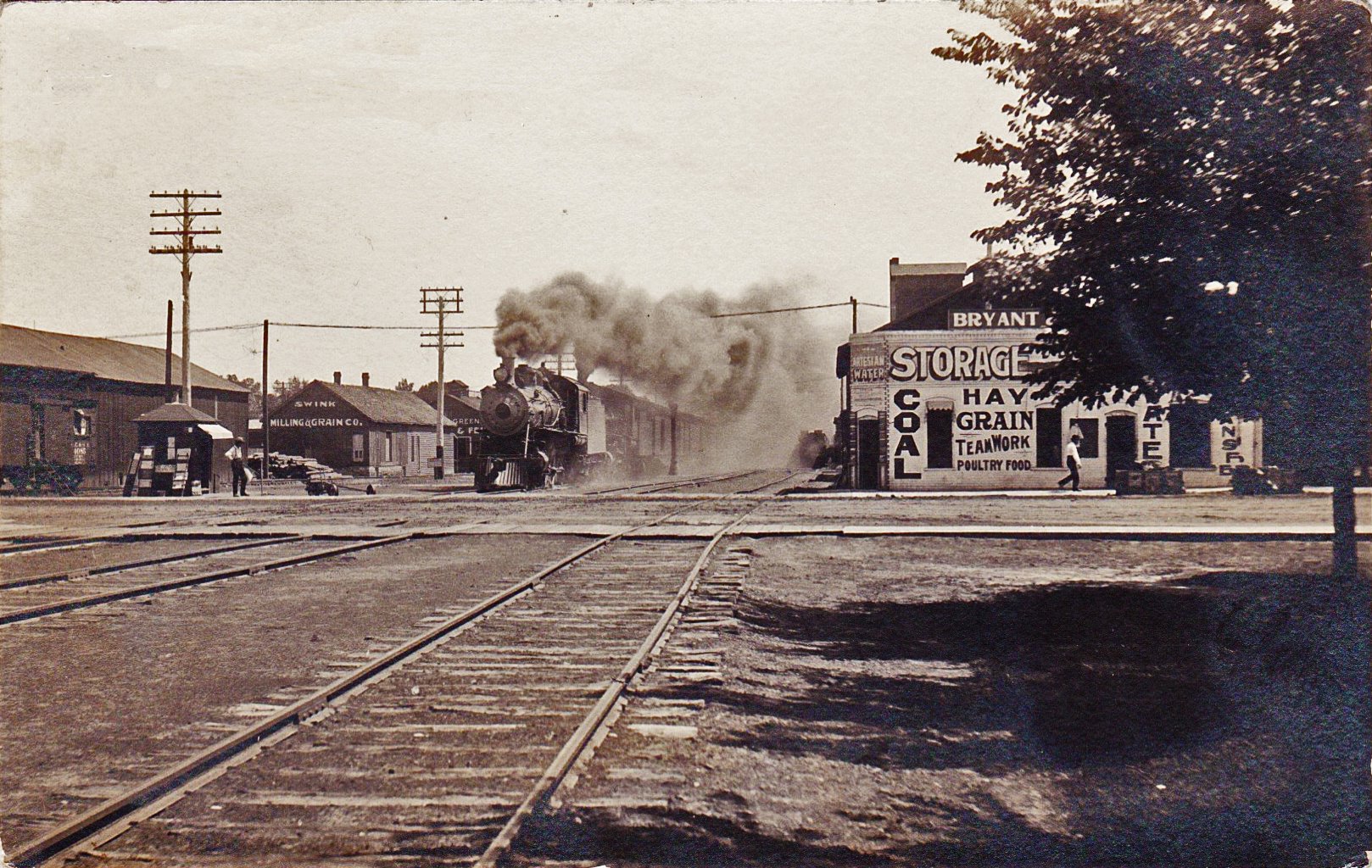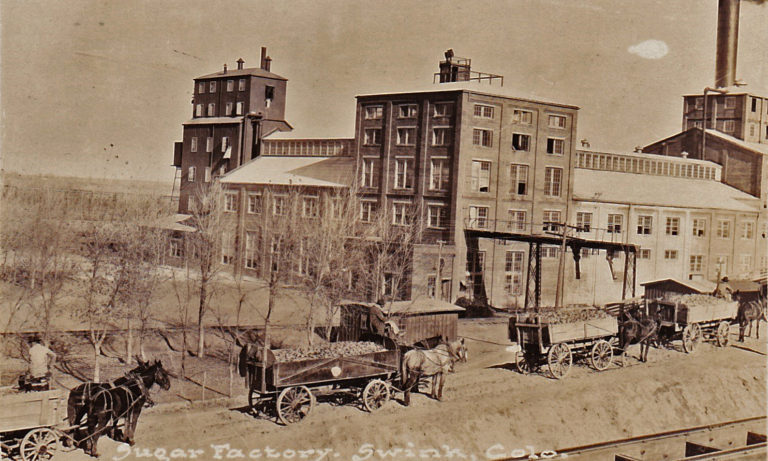If you were to put your boat into the Arkansas River at Pueblo and let the river take you along in its southeasterly flow, you would approach Rocky Ford in about 50 miles, not counting all the twists and turns in the river. Stay afloat awhile longer, and in about 6 miles you would be at Swink. The train in this photo postcard, postmarked September 8, 1911, is described on the card as the “No. 11” westbound for Rocky Ford.
Swink, which is in Otero County, was incorporated in 1906, and named after George Washinton Swink. Before the town of Swink had a name, a group of people had called a meeting to decide on a name for their town, and George Swink was late in arriving. When he entered the meeting room someone suggested that they name their town Swink, and that name carried the day.
George Swink was a Kentuckian born in 1836 who came out to Colorado in 1871 with a wagon train. He and Asa Russell, a fellow wagoneer, established a mercantile and trading establishment at the site of a rocky ford on the Arkansas River, a place Kit Carson reportedly had previously dubbed the “Rocky Ford Crossing Place.” Out of this grew the town of Rocky Ford. Swink was elected as its first mayor In 1877.
Swink served in the Colorado state Senate, was a well-respected farmer, was instrumental in bringing a sugar factory to Rocky Ford, and was considered the father of the melon industry in the area. His proactive work in marketing Rocky Ford melons is evident in a Colorado Daily Chieftain newspaper article dated August 16, 1890. It reported that Swink had just returned from Denver and Colorado Springs and that “the railroads are inclined to deal with him very liberally in the matter of cheap rates. Special trains will be run to Rocky Ford this year from Palmer Lake, Canon City, Pueblo, Trinidad and Lamar. This, with a half rate from the mountain towns and other faraway places, will insure a large crowd at the great melon feast.” The popularity of the Watermelon Day festival Swink started in 1876 is apparent in the fact it continues to this day. “Helen D.,” the sender of the 1911 photo postcard featured here, writes that 37,657 people came to that year’s melon festival. Of course I don’t know if that is an accurate figure.
Swink was the home town of Robert William “Bob” Felps (1933 – 2003), who gave 34 years of service to Fort Lupton schools as a coach, teacher and athletic director. He was inducted into the Colorado Coaches Hall of Fame in 1994.
REFERENCES:
- Aspen Daily Times, Aspen Daily Times, June 15, 1906 (www.coloradohistoricnewspapers.org )
- Colorado Daily Chieftain, August 16, 1890 (www.coloradohistoricnewspapers.org)
- Colorado Daily Chieftain, November 21, 1892 (www.coloradohistoricnewspapers.org)
- Find a Grave. Com at https://www.findagrave.com/memorial/54347218/robert-william-felps
- Historical Marker Project at https://www.historicalmarkerproject.com/markers/view.php?marker_id=HM1C24
- “Rocky Ford, Colorado,” Wikipedia.org at https://en.wikipedia.org/wiki/Rocky_Ford,_Colorado


